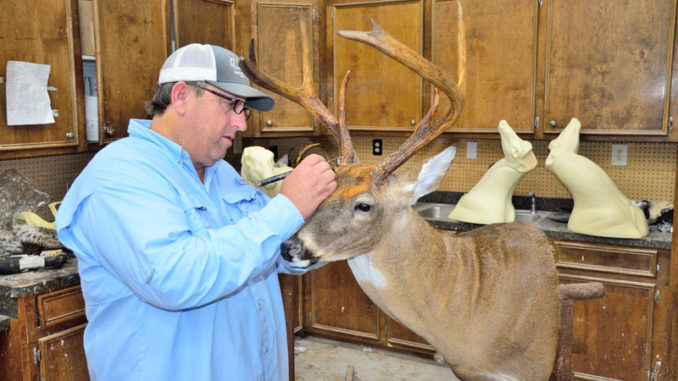
How to pick out the right taxidermist
Hunting and fishing are arguably the most-popular outdoor activities in the country. And when a trophy buck takes a dirt nap, or a 10-pound speckled trout goes in the fish box, these treasured creatures will soon make their way to the taxidermist for a lifetime of enjoyment.
But all taxidermists aren’t created equal. Taxidermy is an art form in every sense. And the best taxidermists are both outdoorsman and individuals with a creative touch. When a hunter or angler takes a trophy from the wild, he or she should take care in choosing the right person for the job.
Hunting and fishing are centuries old and were a way people have sustained existence from nature’s creations. But these finned, furred and feathered creatures have provided civilizations with more than just sustenance. The feathers, bone, skin, hair and even the internal organs have provided for cultures from ancient times to the present. Animal parts are often transformed into utilitarian uses or are used as symbols.
To utilize these products for alternative uses, preservation techniques were invented. Essentially, the art of taxidermy was born. But for most outdoorsman, taxidermists are selected to preserve a special deer, duck or fish that means something. And an experienced taxidermist is what is needed to get the most out of a treasured kill.
Plenty of choices
According to Data USA, more than 531,000 taxidermists are in the United States. But they have various levels of ability. Even though a person claims to be a taxidermist and has all the right credentials, making the right choice is a critically important step to receive a true work of art.
Steve Drummond with 301 Deer Processing and Taxidermy in Florence, S.C., is a total outdoorsman and an artist at heart who started at a young age.
“I have always liked to draw and create things I can be proud of, ever since I was young. I still like to draw and create things,” Drummond said. “It started at an early age for me. I am always trying to make the deer, fish or whatever I am working on look more and more lifelike.”
Don’t focus on price alone when choosing a taxidermist
Drummond operates both a deer-processing facility and taxidermy business in the same building. Deer are the primary subjects in his taxidermy showroom. But he does his fair share of elk, sheep, small game, fish, waterfowl — and dozens of African game species. It is not uncommon to walk into Drummond’s showroom and see a zebra, Cape buffalo, or impala on the wall, waiting to be picked up. He is also one of the only taxidermists in South Carolina who can handle alligators.
“As you can imagine, alligators can be difficult due to the size and the thickness of the hide,” he said. “But I enjoy working on them for people to make them look like they are going to snap at you,” he said with a chuckle.
According to Drummond, successful anglers and hunters should carefully select their taxidermist. Most taxidermists typically charge the same relative price. But price should not be the primary factor in selecting a taxidermist. Anybody can cape out a hide, tack it onto a form and glue on some eyes. It takes an artist’s touch to bring out the animal’s lifelike appearance, both under and outside the hide.
Check out the work
Most taxidermists have a showroom for newly mounted subjects that are ready to be picked up. When hunters and anglers are visiting taxidermists during the selection process, they can look at the finished products to understand what their deer or duck will look like. Drummond advises new clients to look at the mounts and how realistic they look, both under the skin and what’s visible. Even though the hide adheres to the form when glued in place, some features need to be modified under the hide to make the animal appear to be real on the outside.
“Look at the muscular features on the body and the detail around the eyes, ears, nose and mouth. This is where the artists touch makes a difference,” he said. “We build natural features under the hide and then paint everything around the key features to make sure it looks as real as possible. We pay close attention to every little detail we can. Sometimes, it is the hairs around the eyes or the hairs coming out of the nose. It’s amazing how these small features that seem insignificant can make the deer look so lifelike when finished.”
The best taxidermists will exercise extreme diligence in these areas to make these animals and fish look like they are getting ready to walk into the room or swim out of it. Again, taxidermy is an art form and should not be rushed. Taxidermists work year-round to produce the best outcomes for their clients. With deer and duck season over, it is time to check out the taxidermists and take that trophy kill out of the freezer to the preservation specialist. Just make sure to select carefully. Choose an artist that can make the memories keep on living.




Be the first to comment